How does stigma impact the ability of individuals struggling with opioid use disorder to receive care, including life-saving medication?
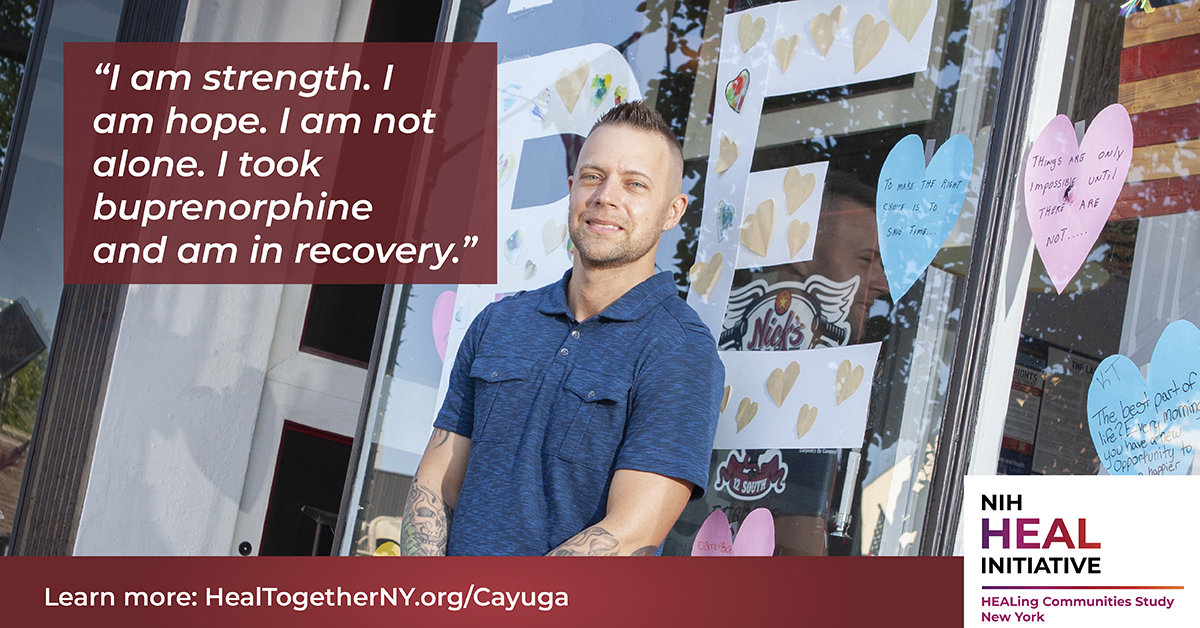
Introduction and interview by Eleni Vlachos
Bryan Bush, a certified recovery peer advocate at Confidential Help for Alcohol & Drugs and a steering committee member of the HEALing Communities Study in Cayuga County has a strong view on stigma and the necessity of medication for opioid use disorder (MOUD). In fact, he can speak to both from a very personal level:
Being stigmatized as an ‘addict’ can feel like a permanent, lifelong stain upon one’s reputation and image. This weight that many in recovery carry around is often the perfect excuse to go out on another run – some of which they never return from.
Mr. Bush, pictured above, lent his image and experience to a recent communications campaign in Cayuga County, one of the participating counties in the HEALing Communities Study, funded by NIH in four states including New York. The Study aims to reduce overdose deaths by 40% in three years. Mr. Bush continues:
“Medication was vital in my early recovery; not only in establishing an early baseline but also the foundation to build a life of balance, self-worth and self-acceptance. It helped do for me what I could not do for myself – and that was put down the drugs and curb the obsession and compulsion to use.”
Recently, the Study completed a campaign to fast-track Narcan to the areas where it’s needed most: Read our interview about this campaign here. Now, the Study has launched a campaign to address stigma and the importance of medication for opioid use disorder in treating opioid use disorder.
SIG’s Director and Principal Investigator of the HEALing Communities Study, Dr. Nabila El-Bassel, drew from SIG’s experience in community-focused public health interventions when securing this major grant with colleagues. She says, "The National Institute of Health-funded HEALing Communities Study, launched in 2019, has made tremendous strides since its launch." She continues:
We are embarking on this important awareness campaign to reduce stigma among providers and communities so that lives can be saved through evidence-based medication. Drawing on our decades of research at the Social Intervention Group on stigma and substance use disorders, we are committed to conducting research that makes a difference in people’s lives.
Recently, SIG interviewed Monika Salvage, the Program Manager in Cayuga County for the HEALing Communities Study. Ms. Salvage shared how she and the Steering Committee in Cayuga County are combating stigma and promoting the use of medication as life-saving treatment.
Introducing Monika Salvage
Monika began her work with the HEALing Communities Study officially last November. Cayuga County, where she works, is part of the first wave of counties that are part of this landmark Study.
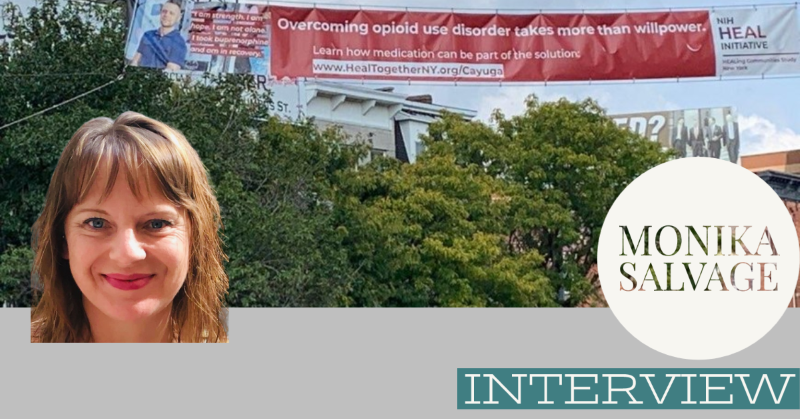
What is the most important thing we should know about stigma and medication for opioid use disorder (MOUD)?
For many people it takes more than willpower to overcome opioid use disorder. We must remember that there is not only one way to recover.
Why is Medication for Opioid Use Disorder important in addiction treatment?
Shelyagh Kennedy, a psychiatric nurse practitioner at the Cayuga County Community Mental Health Center and a member of the steering committee of the HEALing Communities Study in Cayuga could not have said it better. From her recent Op-Ed:
“Imagine suffering every day with [a] deadly disease, losing hope, and feeling completely helpless. Now, imagine that there is a medication for this disease, but it is very difficult to obtain for various reasons. The medication, however, when taken as prescribed, is potentially life-saving and proven to reduce the symptoms of this disease.The life-threatening disease that I am referring to in this instance is opioid use disorder.”
Medication to treat addiction reduces the likelihood of relapse and death, in addition to addressing the physical aspects of addiction. Yet, local prescribers often do not offer a full menu of medication for opioid use disorder because of their beliefs and stigma. To circumvent this, we expand access by bringing in experienced prescribers from contiguous counties to induct and train local physicians who are interested in medication for opioid use disorder but don’t have the experience in administering it.
How is Cayuga helping spread this awareness?
One way Cayuga County is sharing this messaging is by publishing Op-Eds in our local paper, The Citizen. The op-eds are written by members of our steering committee, including a person with lived experience, an addiction specialist and waivered MOUD prescriber, and myself. Here are just a few of the articles:
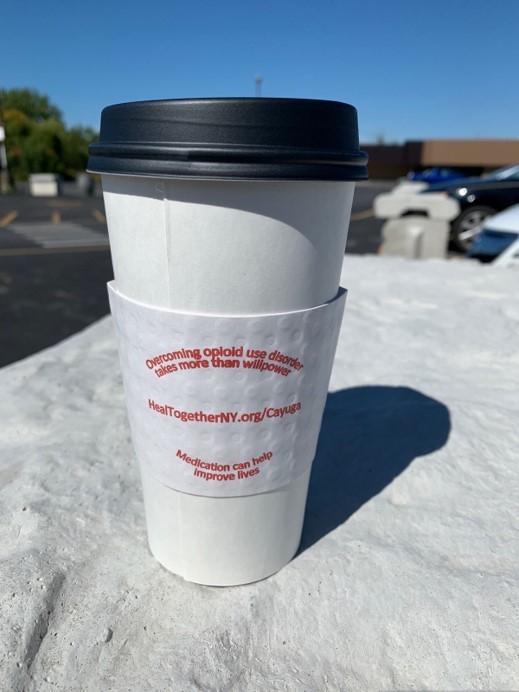
Below are examples of other ways we reach people in our community:
- Elected officials: We present at board/committee meetings
- Community leaders: We present at board/committee meetings
- Businesses: We work with Chamber of Commerce
- General public: We advertise on buses, coffee cup sleeves, over-street banners, flyers, palm cards at public places and county departments
- Healthcare providers: We provide flyers, palm cards for offices, and offer MOUD training for prescribers who are interested in getting waivered
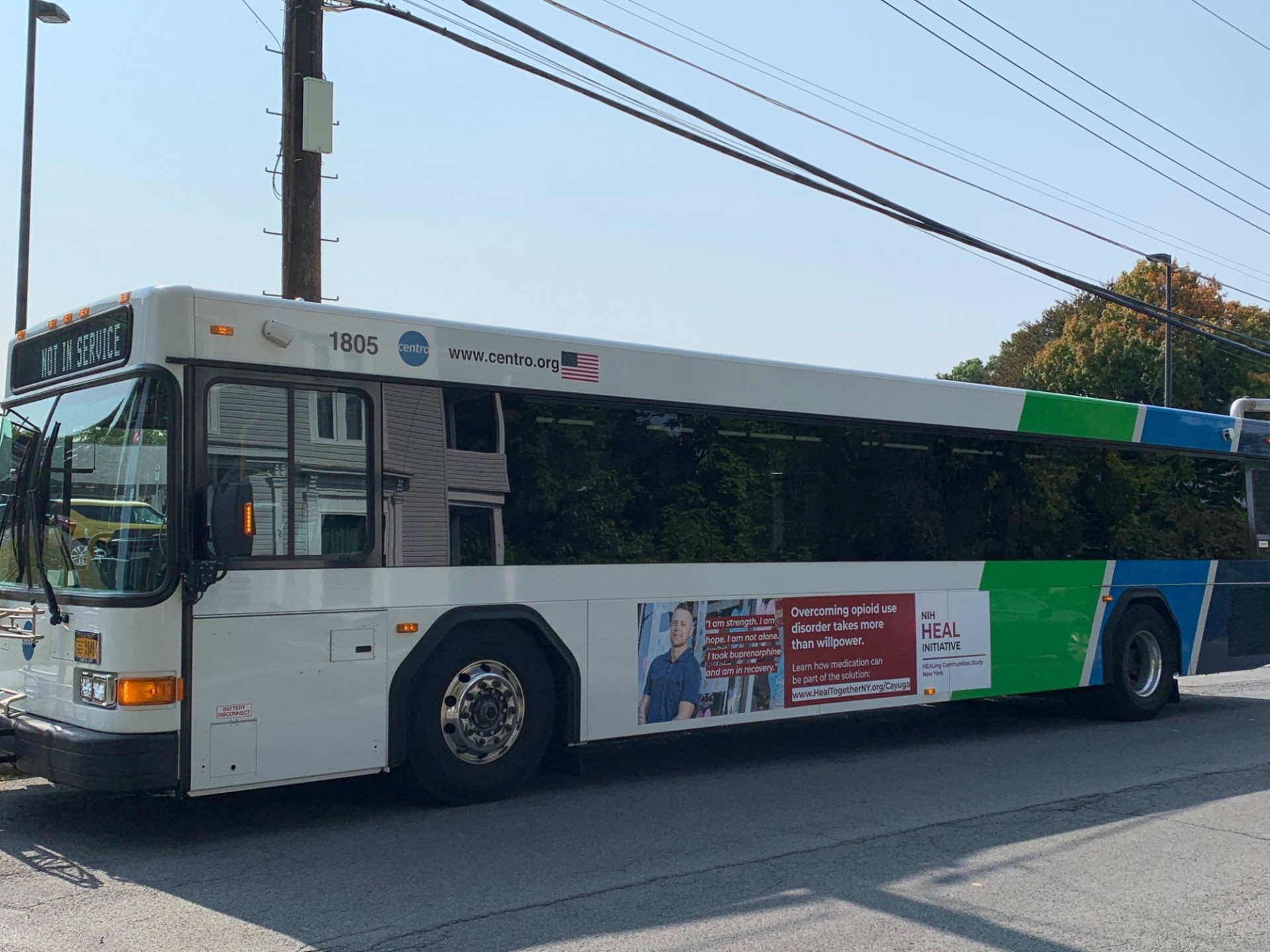
We are also running a social media campaign on our newly created Facebook, Twitter, and Instagram accounts. You can follow us @healingcayuga.
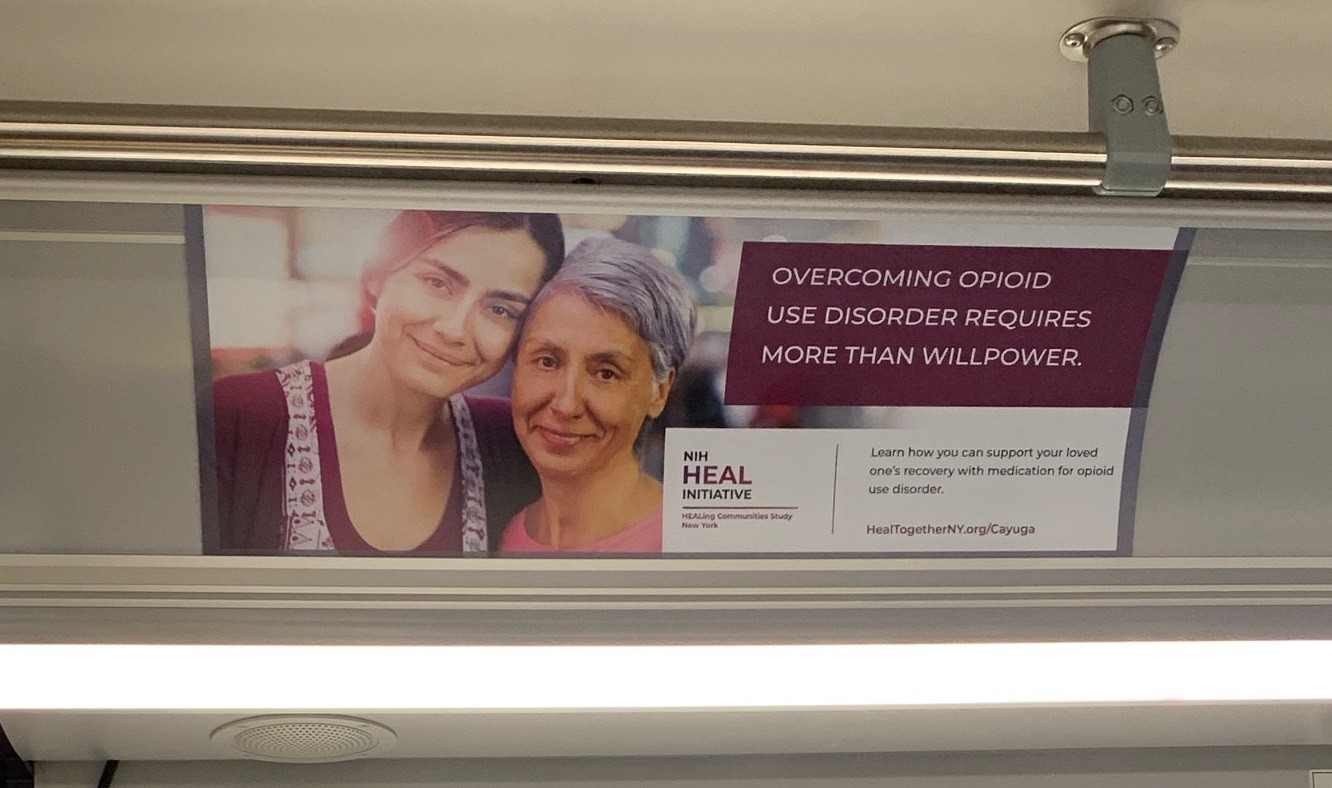
What drew you to the HEALing Communities Study?
I was working for Cayuga County previously in the administrator’s office doing county-wide communications and project management. I enjoyed working with all departments on initiatives, such as redeveloping the county’s website. I also worked with municipal officials on a shared services initiative for over two years. I enjoy planning and organizing and bringing different people to the table to work towards a common goal. I believe in public service and I like big picture visioning but also hammering out the details to make it work. I believe that systems can change for the better if the right people are collaborating. When I was approached about this HCS opportunity I wasn’t sure if I had the necessary background for the job. My background is in communications and project management, not mental health, social work, or any health-related field.
When I asked what the position entails, the response “How does saving lives work for you as a motivation?” stuck with me to this day.
Since then I have researched, studied, and read books on anything related to opioid use disorder that I could get my hands on. I seek advice from people in recovery, health care providers, first responders, law enforcement - anyone who comes into contact with people with opioid use disorder - and I value their experiences and insights. I am good at organizing, coordinating, making things happen, and telling everyone who wants to listen how HCS is making an impact in our community. However, none of this would be possible without the willingness and support of all the partners pulling on one string. I get my inspiration from professionals who help people with opioid use disorder every day. Through this study, my team and I are able to support the work that is happening in our community, collect and analyze data to determine impacts and future steps, and eventually drive change in a system of care that affects our most vulnerable and stigmatized community members.
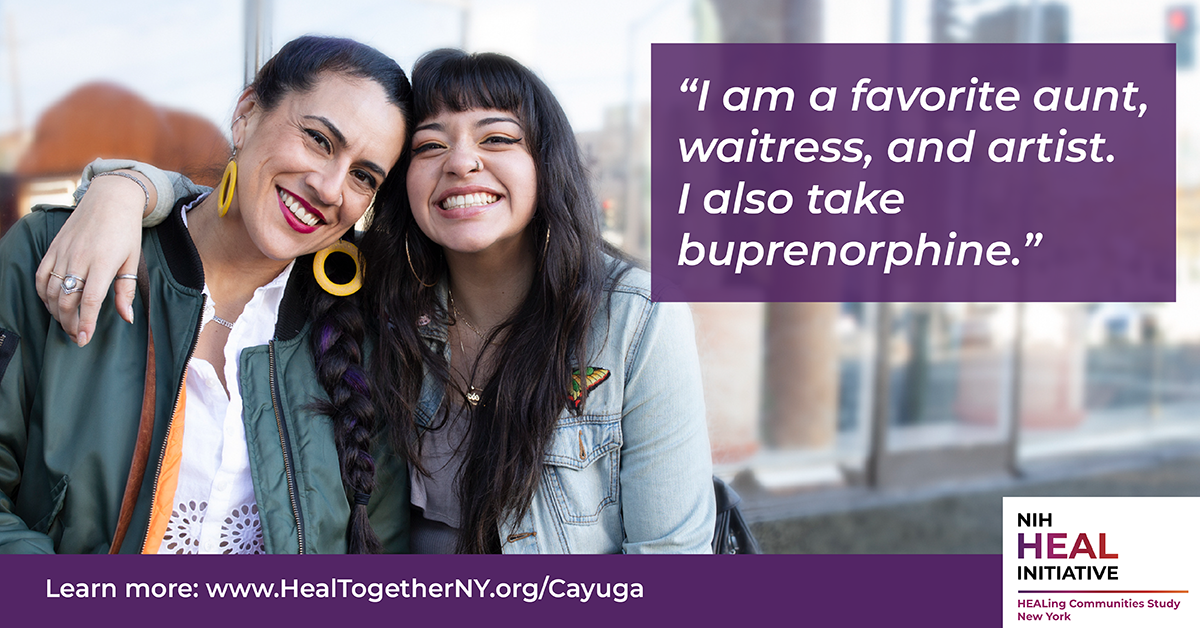
Tell me about your role with the Study.
I am the liaison between the Columbia University research team and our local steering committee and the implementation team. I take what we need to do for the Study and keep everyone organized with what we need to do on the ground. The steering committee group includes members from all sorts of sectors, from law enforcement to elected officials, people with lived experience, education, people in addiction treatment; anyone who could be a point of contact for someone with an opioid use disorder. Agencies are doing a good job -- but how do we make sure people actually get there to access treatment? I am also the leader or “champion” of the steering committee’s communications workgroup.
How has COVID-19 impacted your work?
When COVID started we saw a rise in overdoses. We knew we had to do more because people were dying. But how can we save lives when everything is shut down? We knew we had to get Narcan out into the community and we had to find creative ways to accomplish that. We started an online platform where people can go watch a training video and we would mail a free Narcan kit to them. We have mailed 219 kits throughout the county since Mid-May.
What are the initial takeaways from virtual outreach?
By engaging virtually, we realized we reached the outskirts of the county and not just the city center. We reached rural towns and villages, which did not happen before because trainings were held mostly in and around the City of Auburn.
What did this outreach entail?
We did press releases and the media picked it up. Radio, television, and newspapers were interested. We reached out to the town and village clerks, letting them know that this was available. We also contacted non-profits. We distributed printed cards and flyers at the places open during COVID, including gas stations and grocery stores. We shared thousands of cards with our training URL with law enforcement and first responders who could hand them out to family members at the scene of an overdose. We also distributed the cards to mental health professionals, probation, social services, and caseworkers at the problem-solving courts, or drug treatment court.
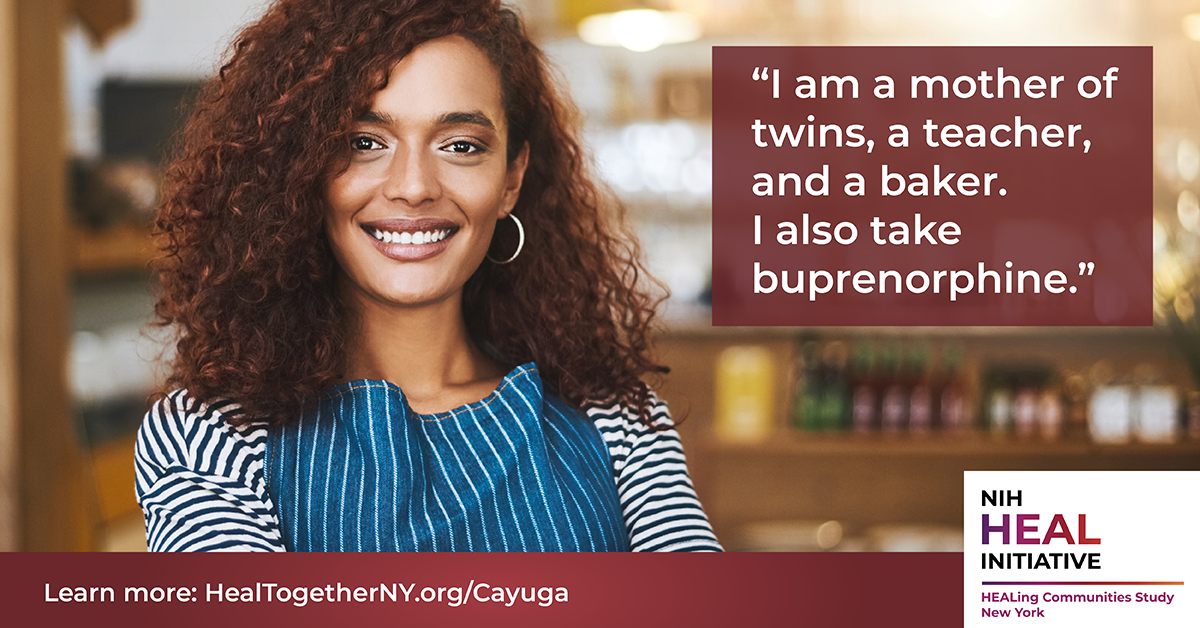
We have rural communities where the Internet is a problem, and due to COVID, people who were struggling with opioid use disorder were isolated from others, only seeing people at the hospital or when interacting with law enforcement. We know that holiday weekends are often days where overdoses are likely to increase. Therefore, before the 4th of July and Labor Day weekends we organized five pop-up events at overdose hotspots, which we identified from law enforcement data. We trained 188 people at these events and provided a life-saving naloxone/Narcan kit so they would have it before the weekend. There were no spike on these weekends, and one person was saved with Narcan by a bystander who lived on the street where we had set up our distribution table.
How do you conduct COVID-safety outreach?
When we did the events in person we had masks and hand sanitizer. We stressed that you can’t do anything wrong with Narcan. It can’t hurt the individual being saved. The campaign began in mid-May with the online distribution. We’ve now seen data that indicates an increase in bystander Narcan administration. We collect and analyze the Narcan usage reports and record who administers Narcan on the scene and it's usually first responders and law enforcement. In the months leading up to May, there was zero bystander administration, but in June and July there were a total of ten. Essentially, ten lives were saved by residents carrying and administering Narcan.
Ten lives were saved by residents carrying and administering Narcan. You can’t do anything wrong administering Narcan.
Thank you, Monika, for your work and time.
The efforts of HEALing Communities in Cayuga, through social media and print materials in the downtown area, are reaching its community. In less than a month, the Cayuga HEALing Communities Facebook and Instagram campaigns reached 346,333 people, subsequently engaging over one thousand people who clicked through to Cayuga's community HCS website.
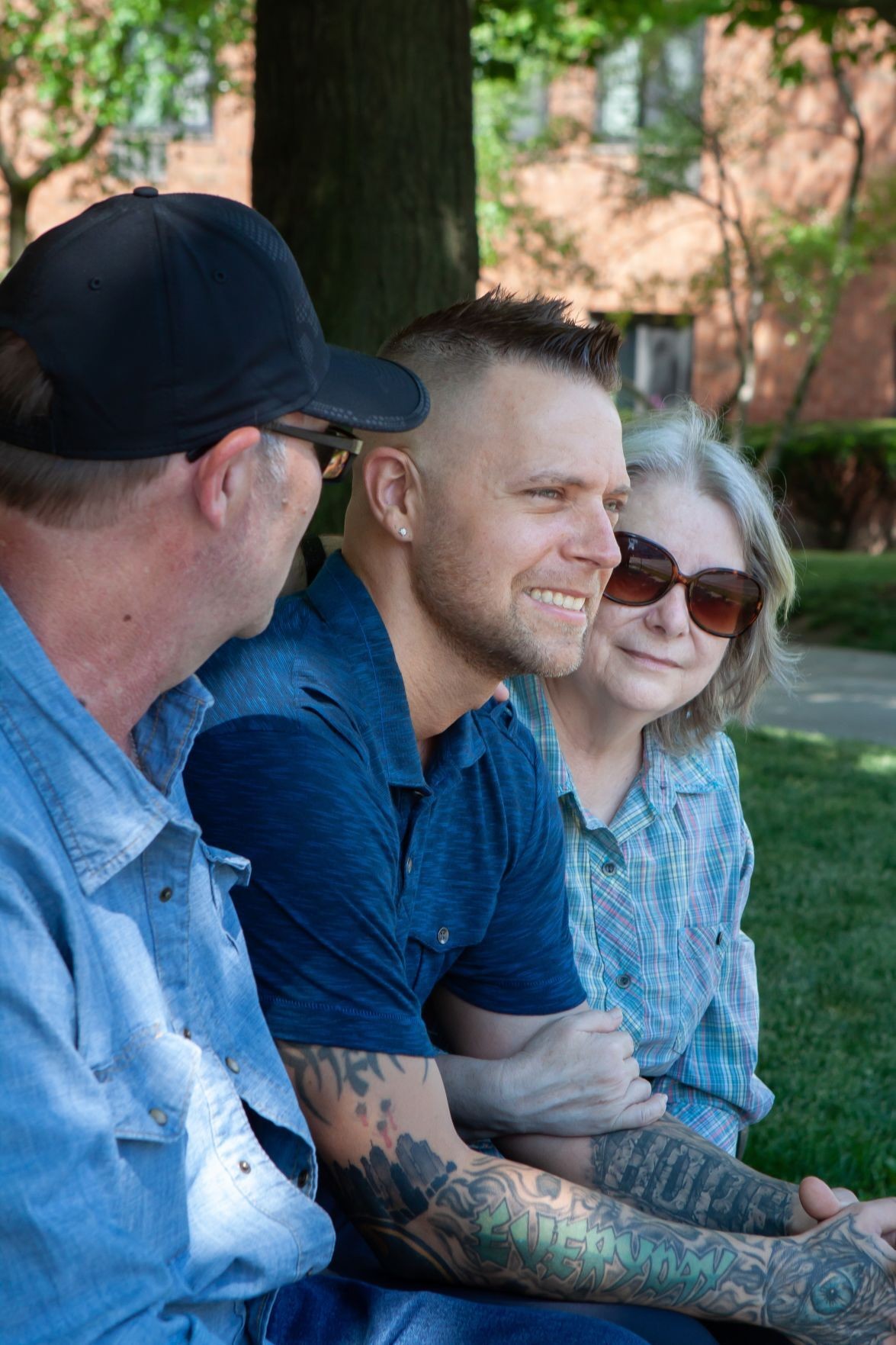
Many of those reached with these campaign messages on the importance of medication for treatment and on reducing stigma may be people like Bryan Bush, care providers, or loved ones who know someone with lived experience like Mr. Bush.
In fact, Mr. Bush, excerpted from his Op-Ed, relays, "My first six months of sobriety involved detox and stabilization (the process of ridding the body of toxic substances) under clinical supervision and intensive outpatient therapy. These, along with a supervised medication for opioid use disorder program, were instrumental and vital in reinforcing my early recovery foundation."
Mr. Bush continues:
If I could have stopped using drugs on willpower alone, I would have done so a long time ago...
